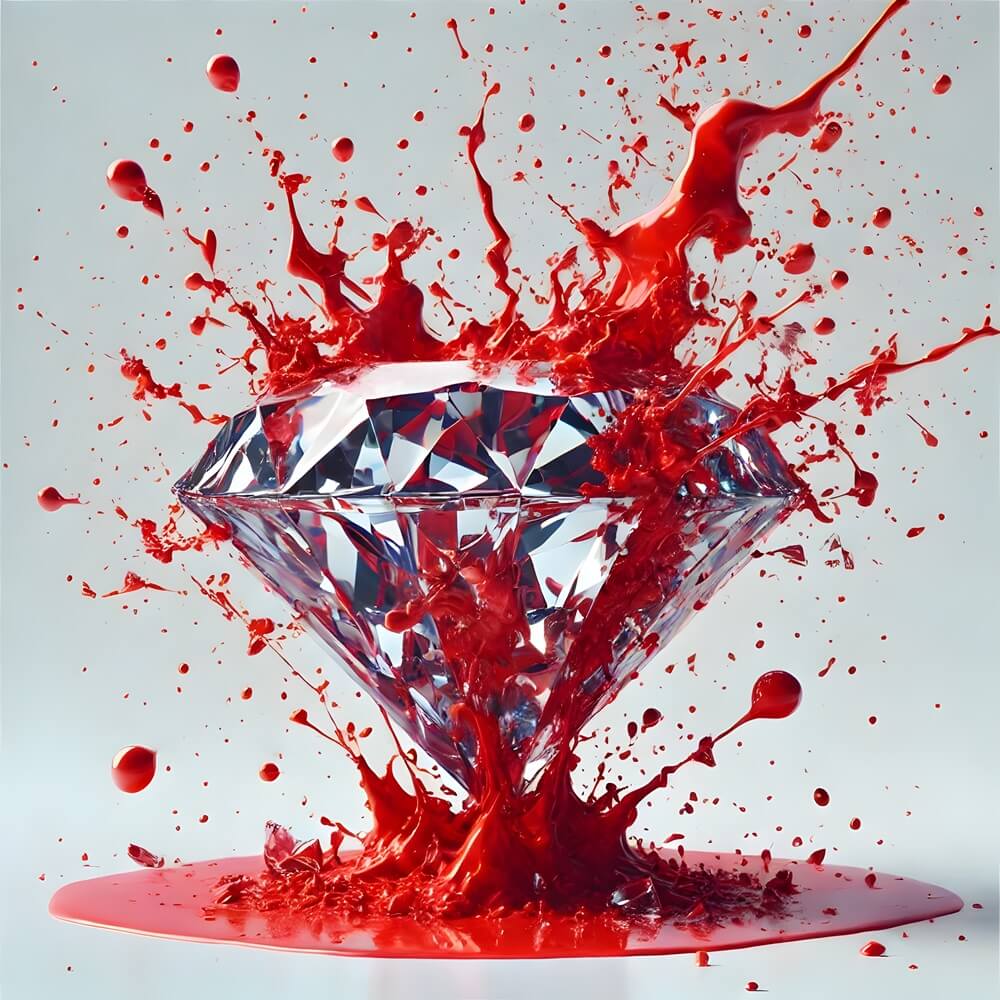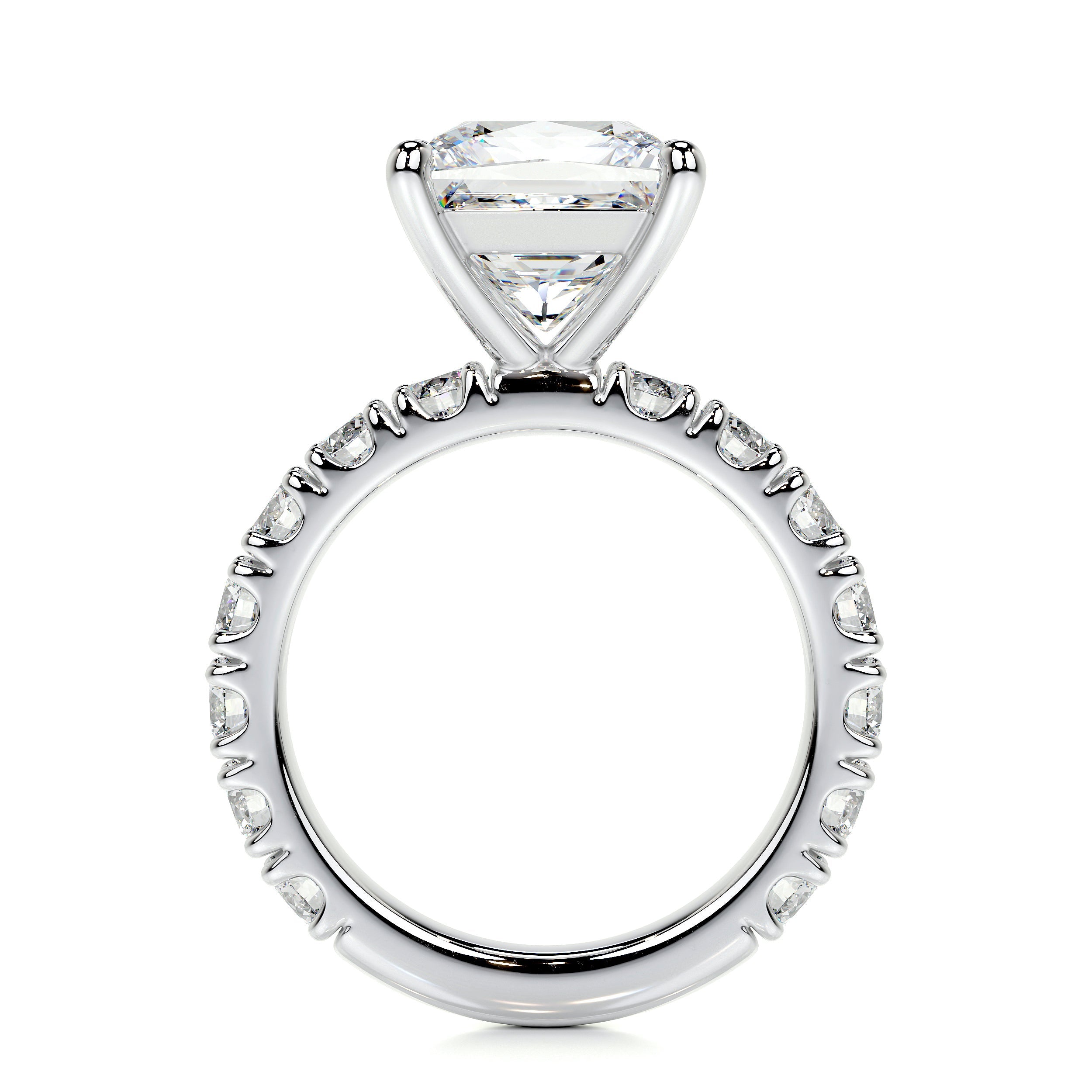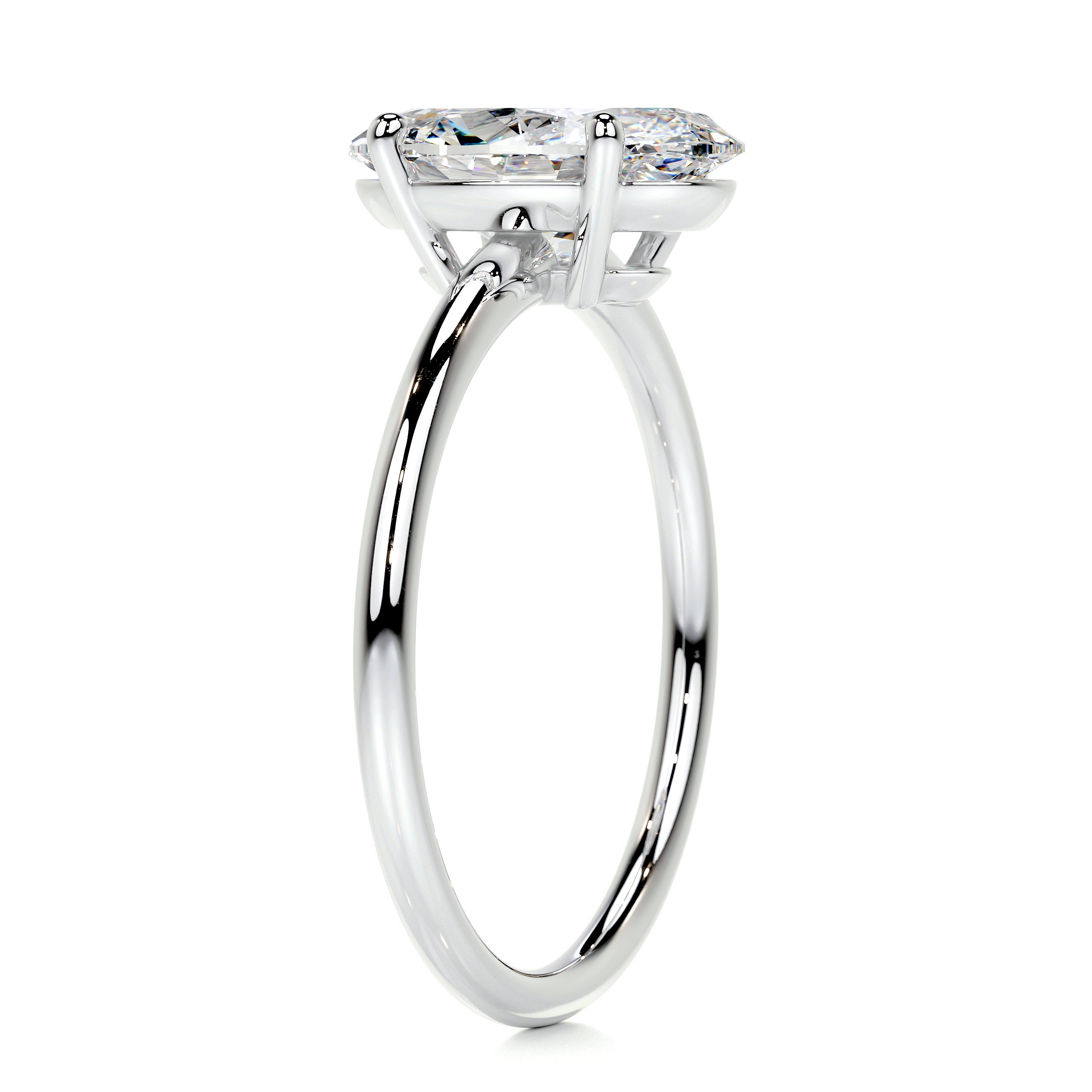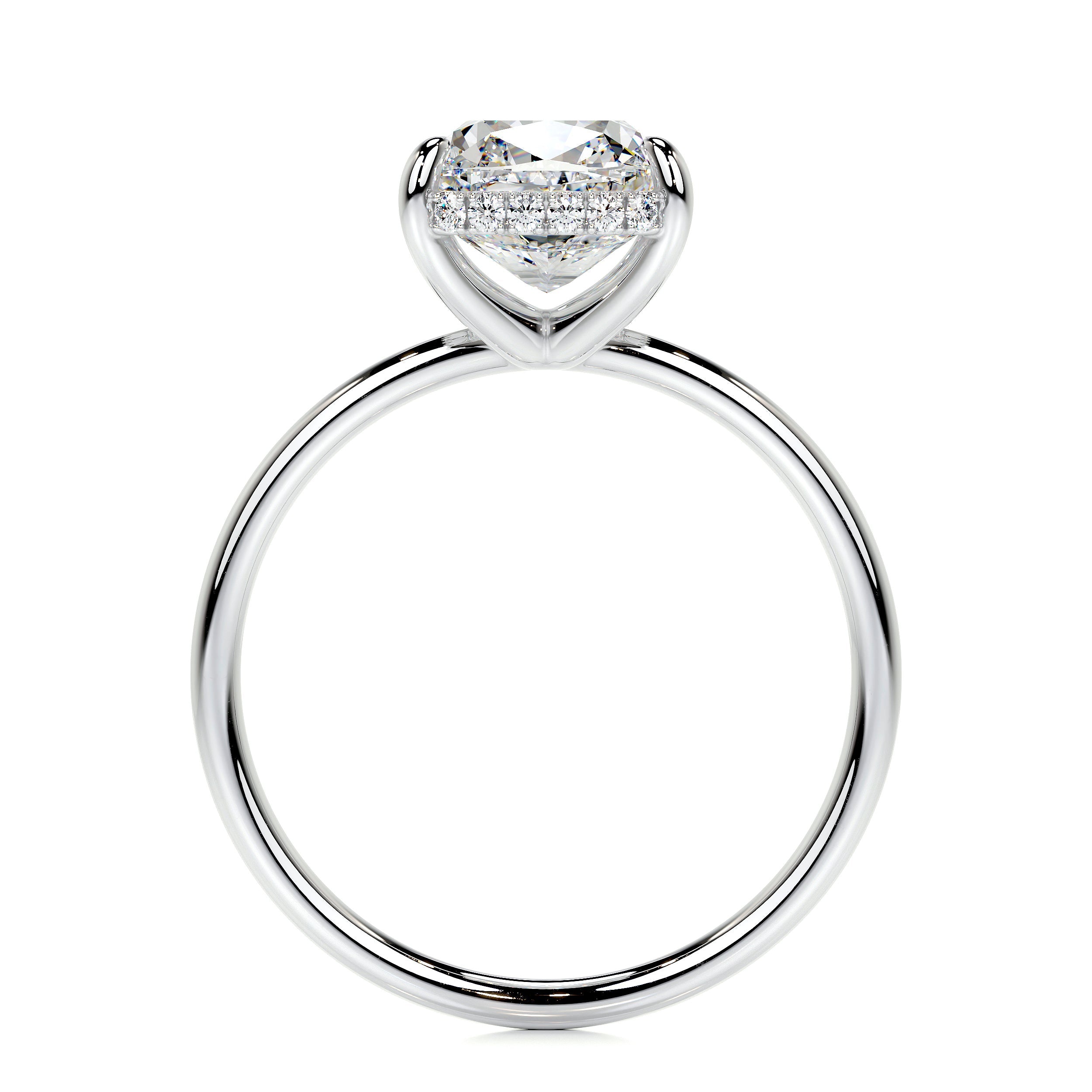It would be hard to find someone who didn’t hear about or see the film Blood Diamonds starring Leonardo DiCaprio in 2006. This memorable film spotlighted the terrible atrocities perpetrated against miners in Africa, and also the wars that were funded by diamond money coming from there. Fortunately, nowadays there are numerous safeguards in place to prevent such human suffering.
To be clear, “blood diamonds” or conflict diamonds, are those mined in war torn areas, and whose sale finances armed conflicts against valid governments. In the past, such diamonds were often mined under forced labor, using children. In the end, these goods were traded illegally to support violent conflicts in the region, and caused human rights abuses.
So, long before the famous film was released, the use of “blood diamonds” as a descriptive term was formed by the UN. It became public knowledge in the 1990s as savage civil wars erupted in parts of western and central Africa by rebels in diamond-rich regions.
Fortunately, the uncovering of such atrocities created safeguards to prevent such abuse in the diamond trade today.
What’s Bad about Blood Diamonds?
For decades before the trade implemented serious safeguards, these guerilla warriors fueled their conflicts in Sierra Leone, and the Democratic Republic of Congo completely unchecked. The profits from these so called blood diamonds became the financial resources to continue conflicts resulting in human rights abuses and environmental destruction.

Bankrolling Conflict
These unchecked diamonds caused great harm around the globe. Their sales financed armed conflict against governments and undermined legitimate rule-of-law. Those diamonds were illegally harvested, stolen, and then smuggled by the rebels seeking to overthrow their region’s government. The profits went straight to arms traffickers or international terrorist groups.
It’s easy to see that the proceeds from these kinds of sales allowed them to expand, which perpetuated continual cycles of violence and instability in the regions. This financial support over the decades caused long-term harm to societies and their economies.
Worker Exploitation & Human Rights Abuse
Until laws were put in place to prevent this, human rights abuses in blood diamond mining areas ran rampant. The mines are in areas of extreme poverty with no work opportunities. Local miners were coerced into labor along with their children, who were often trafficked from these rural outposts. Being forced into working under hazardous conditions, they went without extra pay for excessively long hours. The absence of labor rights and protections left workers vulnerable to abuse and exploitation. Mining operators and armed groups ensured compliance, no matter how hard the conditions were.
Plundering the Environment
Added to human exploitation, these areas also suffered environmentally destructive practices on top of it all. Deforestation, soil erosion, and the contamination of water sources with toxic chemicals were left in its wake. The gross environmental impact on nature devastated local ecosystems, making it untenable for communities to sustain agriculture or access clean drinking water, all substances that provide life to the locals.
Massive pits left behind after mining the regions proved to be health and safety risks. Reclamation efforts put into place later on ensured that the land was returned to its pre-mining condition.
The Turning Point for Blood Diamonds
Responding to the international outcry over blood diamonds gave rise to an investigation into the diamond trade and sparked a fervent demand for international regulations.
As the call for changes grew, then US president Bill Clinton, created Executive Order 13194, outlawing the importation of diamonds from Sierra Leone from 2001 onwards. By 2003, the United States implemented the Clean Diamond Trade Act, banning the importation or export of any rough diamonds which proved not to be certified by the Kimberley Process (also called simply KP).
Laws for the Better
The KP was established in 2003 for the express goal of halting the flow of conflict, or blood diamonds.
Russia’s Story
In a different era, Russia’s state-owned diamond mining conglomerate called Alrosa, was sanctioned by the US government as a source of funding to support the Russian military in its invasion of Ukraine.
In general, Russian diamonds do not meet the exact definition of conflict diamonds. They are not specifically being mined in active war zones and are not being used to fund African rebel groups. Nevertheless, the world responded with sanctions after Russia invaded peace loving Ukraine without provocation.
Democratic Republic of Congo, Zimbabwe, Central African Republic, Côte D’Ivoire, Liberia, and More
The world took a hard look at conflict diamond regions prior to implementing the KP scheme. Each of these autonomous countries had their own separate agendas and desires. They were also engaged in brutal warfare for their own goals. Until the Kimberly Process enforced compliance to mining practices, they used diamonds for their own nefarious purposes. After years of persistence on the part of the global community, many of these nations have fallen into line with human rights and environmental safeguards which benefit their nations.
A United Global Response
The international community has taken abundant positive measures to thwart the continuation of blood diamonds. The Kimberley Process Certification Scheme, (established in 2003), stays in place to prevent the trade in conflict diamonds by mandating the certification of origin on all rough diamonds. Participating countries in the KP ensures that their diamond shipments are conflict-free, with a paper trail to prove it.
Despite these efforts, challenges remain, but not without oversight and potential solutions. The effectiveness of conflict diamond regulation depends on international cooperation and stringent oversight. The Kimberley Process is the primary regulatory arm, with its member countries implementing measures to certify diamond origin.
Nevertheless, the global diamond community continues to adapt to meeting emerging challenges and ensure that KP’s ethical practices are maintained..
FAQs
Where did the phrase blood diamonds originate?
The phrase blood diamonds originated back in the early 1990s when the world got a look inside the diamond trade in various African nations.
What does Blood Diamonds mean?
The term blood diamonds describes rough diamonds harvested in several African regionswho brutalized the miners and used proceeds from diamond sales to fund wars and terrorism.
Did the practice of selling blood diamonds ever stop?
By the early 2000s, various global entities convened to put a stop to the brutal acts of perpetrators of blood diamonds. The Kimberley Process (or KP for short) was created to sanction regions who wouldn’t comply with human rights, ecological concerns, and cessation of using diamond sales to fund wars.
How do consumers today know if their diamond is not a blood diamond?
For the past several decades, all diamonds for sale on the global market must have a paper trail showing the place of origin, so as to eliminate the risk of buying a ‘blood diamond’.
Are there any other ways a consumer can shop for diamonds wisely?
A consumer may ask their jeweler how they acquire diamonds. They can also prove it to the customer by showing a diamond grading report from a reputable lab. Finally, many retailers have bold statements of ethical practice on their website or in their store declaring their adherence to the KP guidelines.
What else can a consumer do to be sure their diamond comes from a complying country of origin?
With so many online sources at the fingertip today, consumers can self-educate about the origins of diamonds in general. Then they can find out from where their diamond was sourced. This gives peace of mind and will help the consumer to enjoy their diamonds even more once they are armed with the facts.




















